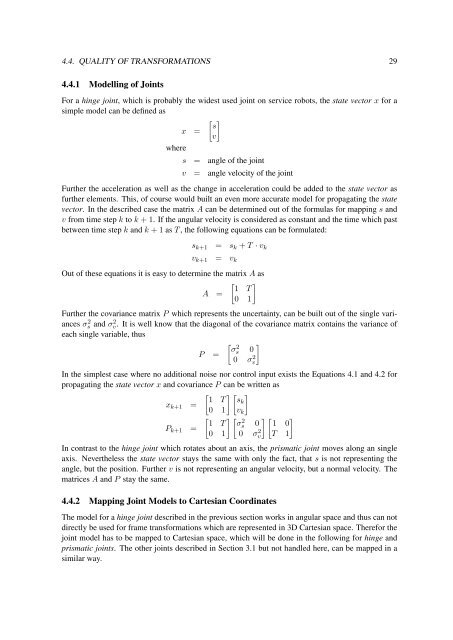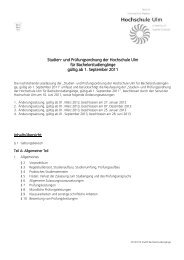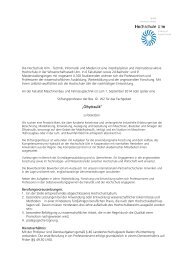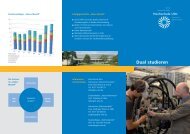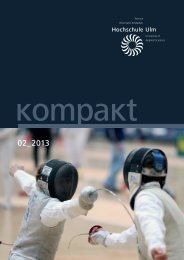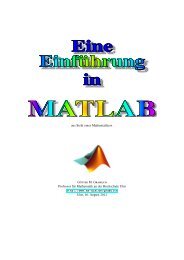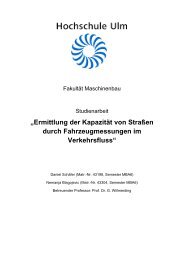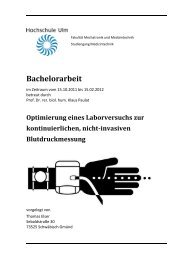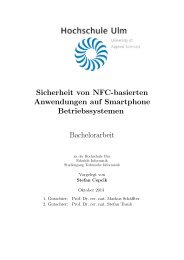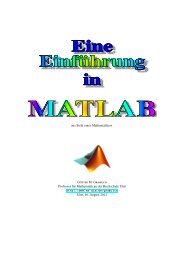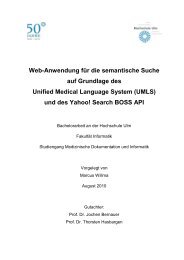PDF 1.938kB
PDF 1.938kB
PDF 1.938kB
Create successful ePaper yourself
Turn your PDF publications into a flip-book with our unique Google optimized e-Paper software.
4.4. QUALITY OF TRANSFORMATIONS 29<br />
4.4.1 Modelling of Joints<br />
For a hinge joint, which is probably the widest used joint on service robots, the state vector x for a<br />
simple model can be defined as<br />
[ s<br />
x =<br />
v]<br />
where<br />
s = angle of the joint<br />
v = angle velocity of the joint<br />
Further the acceleration as well as the change in acceleration could be added to the state vector as<br />
further elements. This, of course would built an even more accurate model for propagating the state<br />
vector. In the described case the matrix A can be determined out of the formulas for mapping s and<br />
v from time step k to k + 1. If the angular velocity is considered as constant and the time which past<br />
between time step k and k + 1 as T , the following equations can be formulated:<br />
s k+1 = s k + T · v k<br />
v k+1 = v k<br />
Out of these equations it is easy to determine the matrix A as<br />
[ ] 1 T<br />
A =<br />
0 1<br />
Further the covariance matrix P which represents the uncertainty, can be built out of the single variances<br />
σs 2 and σv. 2 It is well know that the diagonal of the covariance matrix contains the variance of<br />
each single variable, thus<br />
[ ] σ<br />
2<br />
P = s 0<br />
0 σv<br />
2<br />
In the simplest case where no additional noise nor control input exists the Equations 4.1 and 4.2 for<br />
propagating the state vector x and covariance P can be written as<br />
[ ] [ ] 1 T sk<br />
x k+1 =<br />
0 1 v k<br />
[ ] [ ] [ ]<br />
1 T σ<br />
2<br />
P k+1 =<br />
s 0 1 0<br />
0 1 0 σv<br />
2 T 1<br />
In contrast to the hinge joint which rotates about an axis, the prismatic joint moves along an single<br />
axis. Nevertheless the state vector stays the same with only the fact, that s is not representing the<br />
angle, but the position. Further v is not representing an angular velocity, but a normal velocity. The<br />
matrices A and P stay the same.<br />
4.4.2 Mapping Joint Models to Cartesian Coordinates<br />
The model for a hinge joint described in the previous section works in angular space and thus can not<br />
directly be used for frame transformations which are represented in 3D Cartesian space. Therefor the<br />
joint model has to be mapped to Cartesian space, which will be done in the following for hinge and<br />
prismatic joints. The other joints described in Section 3.1 but not handled here, can be mapped in a<br />
similar way.


